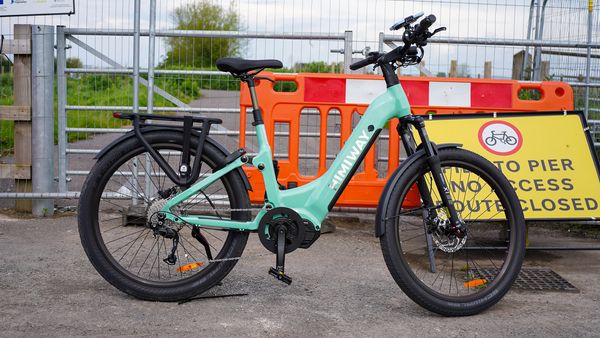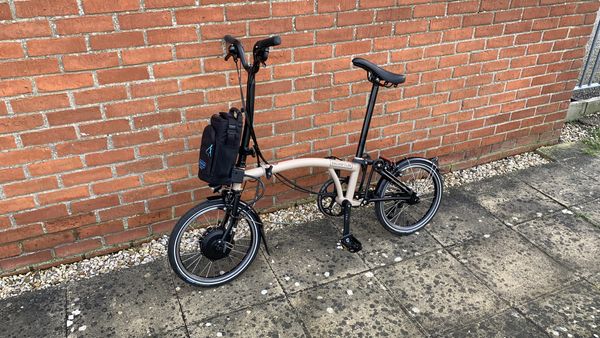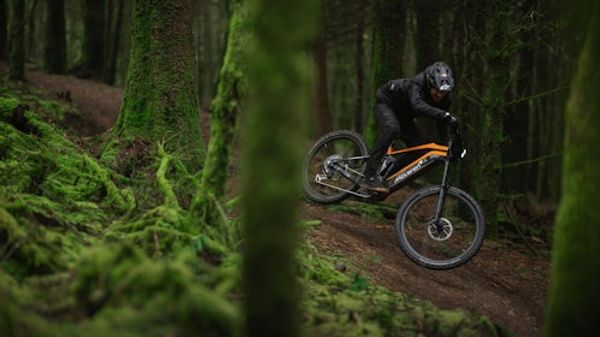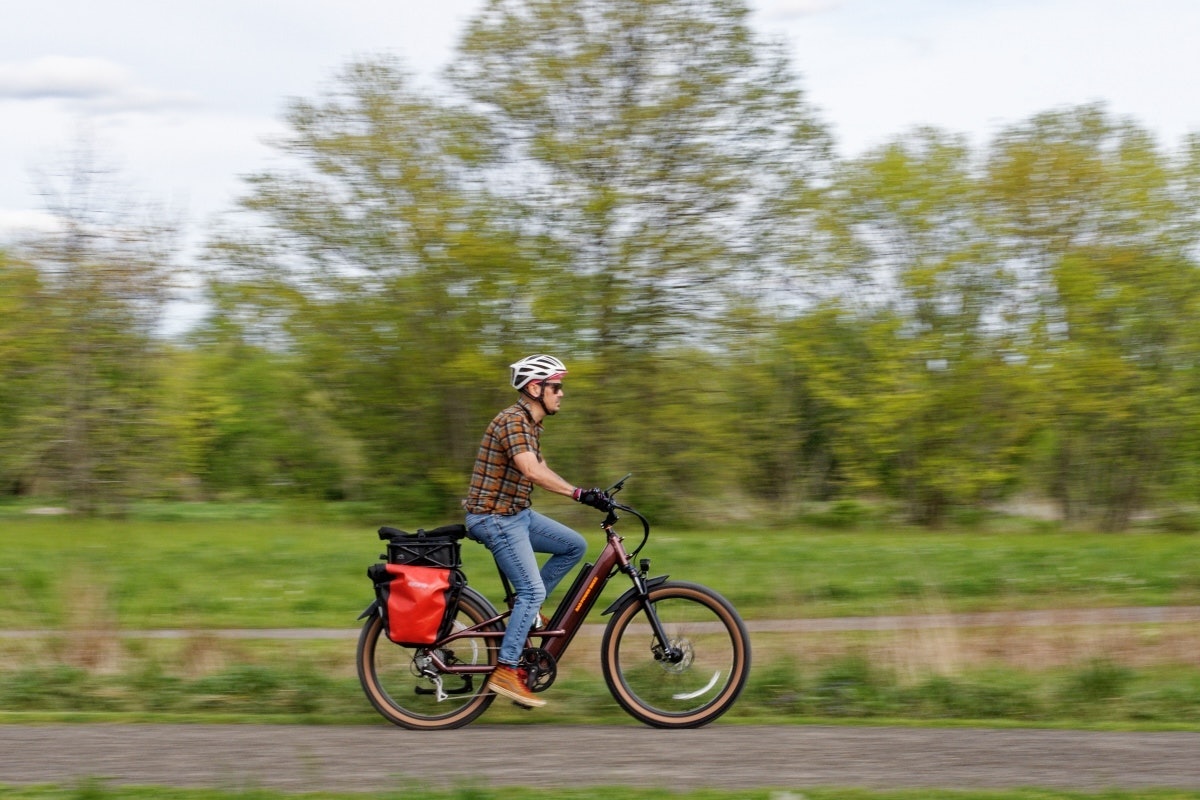
You probably think you drive a lot more miles in a week than you do.
That was my assumption before I ditched my car and rode Rad Power Bike’s new Radster Trail, part of a very hot niche of electric bicycles, the electric cargo bike. In one week, I racked up just a tick over 100 miles — and that wasn’t due to me holding back on my usual commuting habits. In the course of seven days my longest ride was about 35 miles, but most days, just going to meetings, shopping, and using the local trail network to get around, which are both paved and gravel, my average trip length was about 10-15 miles.
Because I used bike paths, which have fewer traffic stops and intersections, I almost never felt significantly slower going the five miles to or from town. My typical errand-and-coffee-shop-work-space loop, plus meeting someone for lunch, stretched the commuting timeline by 10-15 minutes, but not much more than that.
The Radster Trail is considered a Class 3 model, which means it has a top speed of 28 mph with assistance from its hub motor, plus a throttle assist, which is super handy when you need it to leap forward from a standing stop. Bottom line: It’s faster than Class 1 (top assist of 20 mph) or Class 2, which is 20 mph but with a throttle.
As for how much I rode, it’s true that the average driver in America puts in roughly 300 miles a week — so my 104 does include a pretty big drop in the driving habits of most folks. But given that nearly one-third of car trips in America take us less than one mile, a serious test on an e-bike tells me something — I can put a dent in my driver miles with an e-bike, and I might even be happier for it.
Swapping Car for Cargo
For my week without a car, there was but one choice of e-bike that would fully suit my needs: The cargo e-bike. In most cases, this simply refers to an e-bike that is made much, much beefier than your average bike since it’s designed to carry stuff or a combination of people and gear. In the case of the Radster Trail, that total payload is a whopping 370 pounds. A more kid-centric model, the Radwagon 5, carries slightly more payload (375 total pounds) and the longer wheelbase is designed for more easily balancing two kids behind the parents. Specialized (and many other brands) also compete in this segment. Their Globe Haul LT can carry up to 441 pounds and you can otherwise find a great range of carrying capacity.
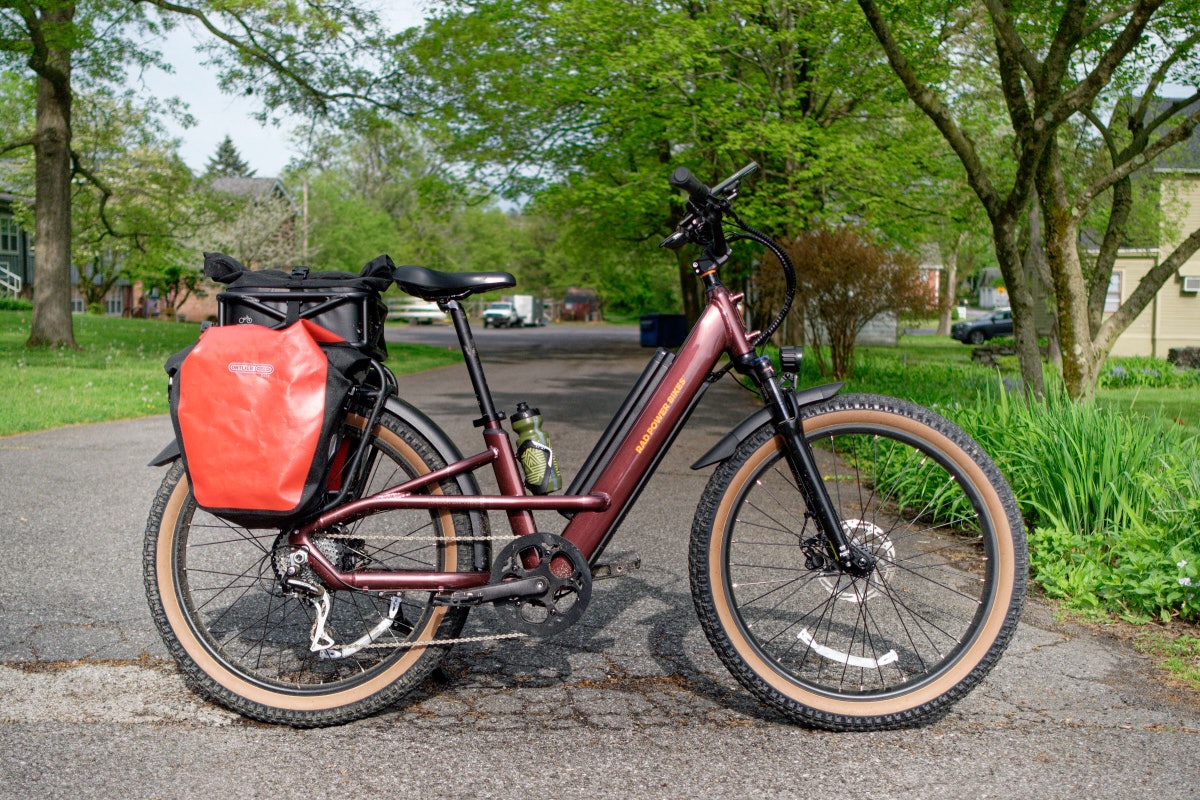
Cargo e-bikes are also built to be powerful, since you need muscle to move the payload. As such, the Radster Trail kicks out 100 Nm of torque from its hub motor. In other words, it’s a lot of fun. Sure, cargo e-rigs are practical, but they’re a grin-inducing kick in the butt, too.
Electric cargo bikes tend to be heavier, however, and the Radster Trail was no exception, weighing in at a porky 77.5 pounds. The Globe Haul LT is even beefier, at 88 pounds with a longer wheelbase. This means a few things: First, you really do need that electric assist. And you’ll also need garage storage for most of these. The aforementioned Specialized is nearly half a bike length longer than a typical bicycle; the Radster Trail is not. But when you festoon one with racks, they’re also a little wider than the average beach cruiser, too, so figure the footprint of two “normal” bikes for storage, mostly from the added width. They’re stable and not too hard to push around, but they’re a beast to lift onto a car’s receiver bike rack and aren’t nimble enough to be carried up or down stairs regularly. The battery is removable, which sheds 9 pounds, but it’s still not a bike you’re throwing over a shoulder.
Trunk Space, Safety, Gadgets, And Range Anxiety
At one point I piled up both panniers and the accessory bag Rad sells with groceries, a twelve-pack, and then stopped at the big-box store and picked up a propane cylinder for our grill and strapped that to the top of the rear rack. The sucker added 50 pounds and I thought maybe I was pushing my luck. Shockingly, that was no sweat; the bike is exceptionally stable, and in some ways, it’s actually more planted when you’ve got more weight over the back tire.
Now, your tonnage will vary. Rad sells their own panniers (mine were aftermarket), and their Ballard Cargo panniers cost $79 each and hold 28 liters a piece. Then they have their Large Basket Roll Top Liner bag, which is really like a big suitcase, that holds 73 liters. And on the Radster Trail you can also mount a front rack and fit one of those liner bags to the nose of the bike, too. And if you did that, all told you’d be hauling the equivalent of about four overnight backpacks worth of stuff — or if your mind thinks in terms of filled paper grocery bags, about 6-8 of those.
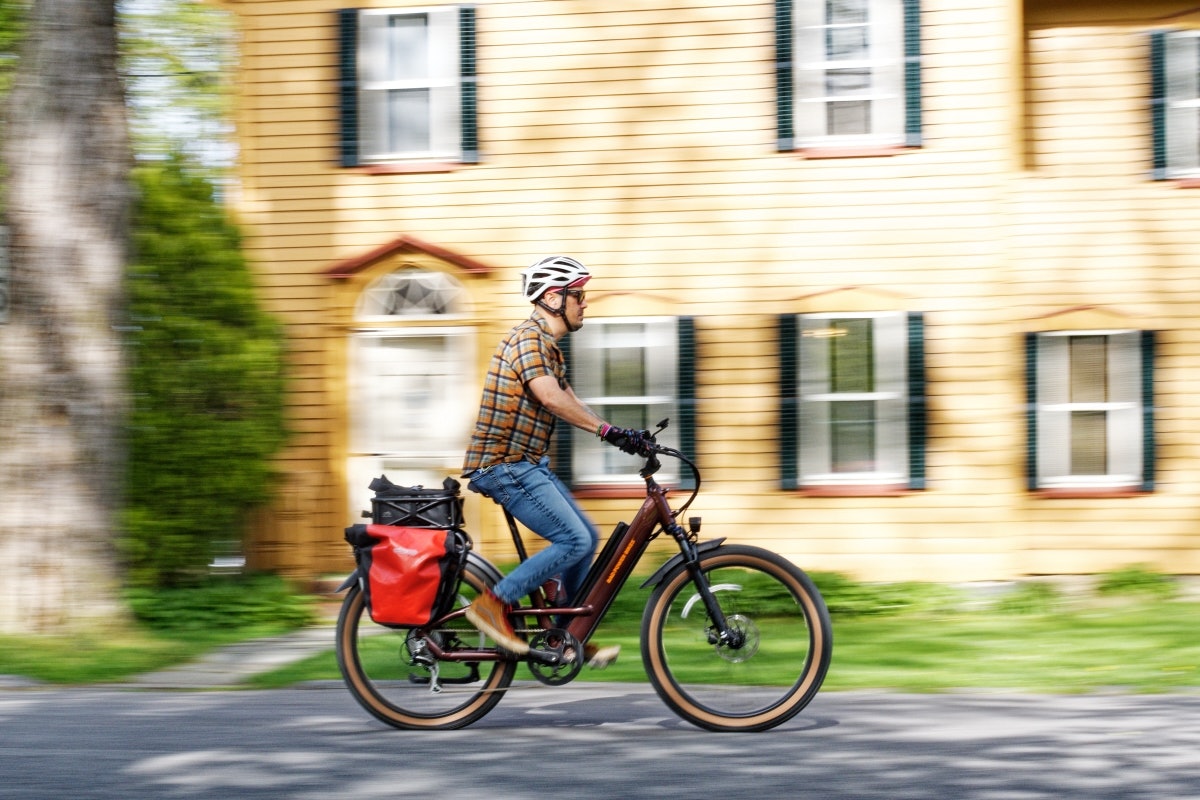
Basically, unless you’re heading to Home Depot to pick up a bunch of lumber, the cargo bike will carry everything you need.
Range, on the other hand, can give one anxiety — even on two wheels. Rad bills the Radster Trail as being able to roll 65 miles per charge, but that would probably only happen on level ground, with a tailwind. My somewhat hilly town loop limited the range, and even though I’m all of 150 pounds, adding cargo also ate into what I was able to eke out of any single fueling. Plus, those wide, balloon tires chew a lot of inertia. I could go 40 miles pretty easily even adding cargo and hills, but for one meeting that’s pretty far away, I wasn’t sure I’d make it there and back. The solution would be to bring the charger and top up while there. Instead, I called an audible and we met on Zoom. (Hey, if we’re talking about tech workarounds to too much driving, that one’s basically OG.)
Charging works pretty easily. You can either remove the battery from the bike’s down tube and charge it separately — and this is ideal if you’re locking the bike at work and carrying the battery to your desk — or leave it on the bike. To charge, insert a small plug into the battery, and there’s a charging block that’s about the size of water bottle with a cord you plug into a normal wall outlet. If you drained the battery completely it would take about 8 hours to refill, but I saw more like 4 hours or less to go from half depletion to topped up. Also, charging stops automatically so you don’t have to monitor it.
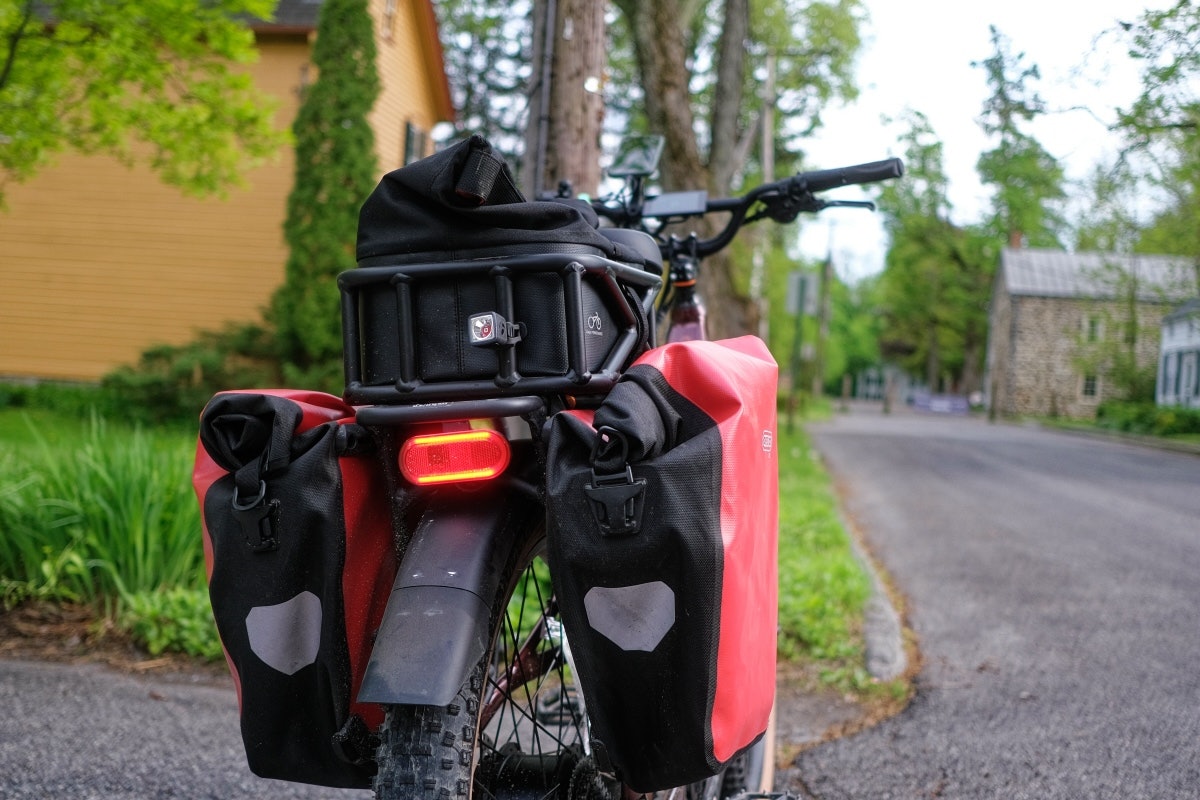
The Radster Trail also comes with some very smart safety features, such as a tail light that gets brighter when you brake, and even turn signals. Plus there’s a 200-lumen headlamp that’s brighter than the average e-bike gets, even ones that sell for well above the $1,999 sticker of this unit.
One very clever feature that Rad now adds to its bright, and very logically laid-out color screen, is an NFC card reader. The bike comes with a pair of these cards that you can just add to a keychain or slot in your wallet. This means not having to enter a code to unlock the bike, and its motor won’t operate otherwise, so any thief is going to be pushing a 77.5-pound brick.
I added a phone mount to the test bike, and while it’s an overlooked feature on most e-bikes I’ve tested, here Rad wisely adds a USB-C charge port directly to the D-pad-like controller used for power assist level, turn signals, etc.
The Good, The Rad, and Nothing Ugly
An e-bike is a great addition to any house. Maybe you have other reasons to hesitate — like you’re waiting for your city to be like Denver, and offer e-bike rebates on the purchase of one. But the Radster Trail is already cheaper than any car, and adding cargo capacity lets you double down on your commute and fetch the groceries on the way home, plus arrive with a clear head, not thinking about your work day. With a little planning, you can replace a bunch of your short errand fetching drives when you were going to burn gasoline to get a few groceries and instead pedal there and take advantage of a beautiful spring day.
Yes, of course, there are limitations. It sucks to ride in the rain, and the Radster Trail’s front fender doesn’t stretch close enough to the pavement to prevent tire spray from nailing your shoe tops. (They make an aftermarket one with better coverage, but this seems like an oversight.) And obviously, if your daily commute is all highways or it’s 30 miles in each direction, you won’t be ditching your car to pedal it. And of course, even if you live somewhere where the weather is perfect, like San Diego, say, maybe the cycling infrastructure is iffy or dangerous.
On most rides, using level 2 or 3 assist (out of 5 levels) my heart rate was about where it would be for a fast walk.
Still, 83 percent of Americans live in or near cities, and a lot of us now have hybrid work situations, too. In fact, with the Radster Trail, I chose to ride to my neighborhood coffee shop to do some work, just because I enjoyed having an excuse to pedal somewhere for 20 minutes, whereas driving there felt pointless.
And over the course of pedaling, I found that everywhere I arrived during my e-bike week, I was in better spirits. Why? Well, with an e-bike you are still pedaling. So you are working. I used my Apple Watch’s heart rate function to track this, and on most rides, using level 2 or 3 assist (out of 5 levels) my heart rate was about where it would be for a fast walk or a slow jog. Yes, the Radster Trail has a throttle assist, so you could just motor everywhere that way, but I dug the low-level workout, and my mood that week was pretty great. So if you want another reason to want an e-bike, unlike an electric car, you’re helping your health as well as the planet’s. And good luck buying a Tesla for $1,999.






